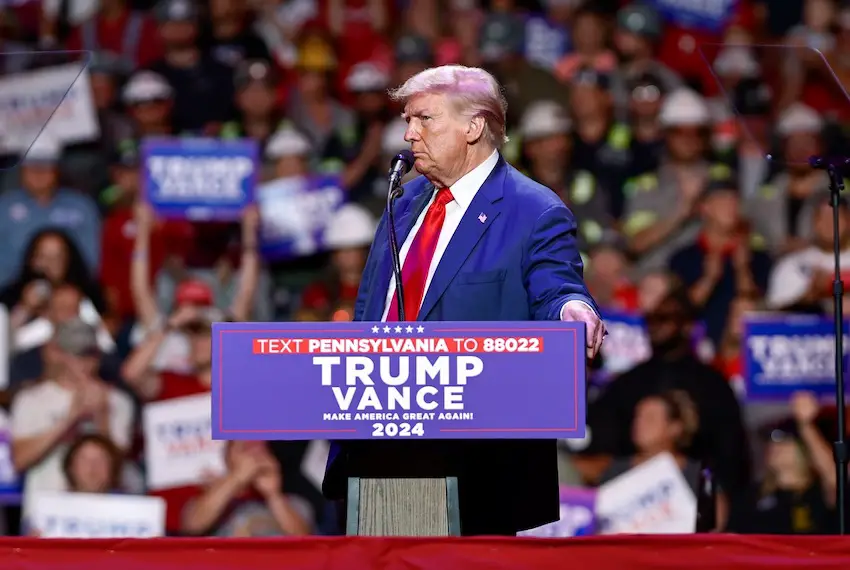The Mexican peso went on a rollercoaster ride on Wednesday after Donald Trump won the U.S. presidential election.
After closing at 20.08 to the US dollar on Tuesday, the peso depreciated to a low of 20.81 to the greenback in early trading on Wednesday.

That position – a depreciation of 3.5% compared to the USD:MXN rate at the close of markets on Tuesday – was the peso’s weakest since August 2022.
The currency subsequently rallied and was trading at 20.16 to the dollar at 6 p.m. Mexico City time.
Mexico’s close trade relationship with the United States makes the peso particularly vulnerable to political developments in the U.S. During the U.S. election campaign, the likelihood of a Trump victory contributed to the peso’s depreciation to above 20 to the dollar.
However, the slump to 20.81 to the dollar on Wednesday was “a fall some analysts said may have been overdone,” according to the Reuters news agency.
The currency’s rebound to virtually the same position it was at 24 hours earlier supports that view.
Throughout the election campaign, Trump’s threats to impose hefty tariffs on cars made in Mexico affected the peso. The former U.S. president has also pledged to renegotiate the USMCA, and on Monday issued a new threat – a 25% tariff on all Mexican exports if the government of Mexico doesn’t stop what he called an “onslaught” of criminals and drugs to the United States.

In recent months, the peso has also been highly sensitive to political developments in Mexico. It depreciated sharply in June after the ruling Morena party won big majorities in Congress that enabled it to pass controversial constitutional reforms such as the recently enacted judicial overhaul that allows the direct election of all Mexican judges.
The Supreme Court’s rejection on Tuesday of a proposal to partially invalidate the reform also contributed to the peso’s plunge on Wednesday morning.
The outlook for the peso
Chris Turner, global head of markets for Dutch financial services corporation ING, said he couldn’t rule out a depreciation of the peso to 22 to the dollar in coming weeks.
He also said that 2025 could be a “rough year for the peso” ahead of the scheduled review of the USMCA in 2026.
Gabriela Siller, director of economic analysis at Mexico’s Banco Base, said on social media that the peso continues to face “internal risks, especially now” that Morena and its allies are seeking to approve a constitutional reform that would disband a number of autonomous government agencies.
In another X post, Siller acknowledged there is widespread “concern” in Mexico about a second Trump presidency, but stressed the importance of remembering that the former (and soon-to-be) president initiated a trade war with China and signed the USMCA during his first term.
Since the USMCA took effect in 2020, Mexico has become the world’s largest exporter to the United States, and foreign investment in Mexico has increased as a growing number of companies relocate here or expand their existing operations in the country.
Rodolfo Ramos, head of Mexico research at Brazilian bank Bradesco, said that his bank anticipated “uncertainty on tariffs in the short term” but added that “we remain positive on nearshoring over the medium and long run.”
The current USD:MXN exchange rate is “an attractive entry point” for investors to Mexico, he said.

A volatile day on the Mexican Stock Exchange
The Mexican Stock Exchanges benchmark index declined more than 2.5% shortly after opening, but ended the day 1.77% higher.
The El Economista newspaper reported that the turnaround was supported by investors snapping up stocks that dropped in value early in the day.
With reports from Reuters and El Economista
